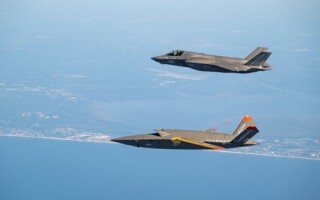A black box for high-speed boats
StorySeptember 06, 2019
High-speed boats for military, law enforcement, and search and rescue (SAR) applications can take an unwanted pounding, as can their operators and critical electronic payloads.
While suspension seating and shock-mitigation technology has improved conditions for the operators, enabling the operators to operate the boats at increased speeds and for longer hours, the boats still continue to get beat up, as they were not designed to operate that fast, in rough seas, for extended periods of time.
“The boats are being destroyed because they’re being driven too hard,” says Sean Gerrett, Sales Manager, Military/Professional Products for Shockwave Seats (Victoria, British Columbia, Canada). “Another reason for increased speeds has been the increased engine horsepower. Just a few years ago, the outboard engine was 250 horsepower; now it is 425 horsepower and there are four installed across the back of the boat instead of one or two. That is a lot more horsepower and way more speed – and shock goes up exponentially with speed.”
All that increased speed and slamming will create problems in different parts of the boat: “We also see problems surfacing with the hull, propulsion, and electronics,” Gerrett continues. “Scanners on the radar arch are failing, as are thermal-imaging cameras, antennas, and so forth.”
A black box captures data to mitigate damage to boats, personnel
To solve the problem of damage to boats at high speeds, Shockwave Seats invested in a U.S.-based company called KENAI that leverages the concept of data collection and monitoring to provide real-time feedback on the health of the boat during high-speed operations through its Vessel Impact and Motion Monitoring System (VIMMS). Having all this information at their fingertips enables vessel operators and program managers to slow down their speeds if necessary and even track the health and well-being of the boat’s crew and electronics.
“Elements of the system originated from across multiple applications and industries,” Gerrett says. “The telemetry comes from work we’ve been doing for race cars. The military has been monitoring personnel well-being for years; for example, in fighter planes, the Air Force monitors and tracks every turn and every acceleration throughout the aircraft’s life cycle.”
KENAI uses its DYENA Vessel Monitoring Unit (VMU), to record detailed information on acceleration forces throughout the vessel as well as on such data as optional position and performance factors, like the black box in aircraft. (See figure above: Pictured is where the KENAI Vessel Impact and Motion Monitoring System [VIMMS] sensors and interfaces typically reside in a high-speed boat. Image courtesy of Shockwave Seats.)
“This black-box approach has been a long time coming to this industry,” Gerrett says. “This was a dream of ours since our first seat. We visualized a system that provided boat operators with a warning when unsafe conditions existed, such as an over limit G [force] alarm, or OLGA.”
The DYENA VMU samples vessel-shock loads at 1,000 Hz alongside optional GPS data, which is then filtered at 25 Hz to provide real-time situational awareness and vessel/crew health. Records are simultaneously logged to generate reports on vessel use, impact forces, and crew exposure to shock and vibration.
With this new technology, data can be collected and tailored easily – including information on telemetry, location, and video – to the specific requirements of the customer. This monitoring enables the boat operators and their superiors to know how the boat and its contents, both humans and electronics, are being impacted by wave actions and acceleration.
The black box also tracks the crew from the moment they sit down: “The crew will have an RFID chip in their primary flotation device (PFD) and an antenna on the seat back so when they get into a seat it knows who they are and will track their acceleration experience, calculating whole body vibration (WBV) to the limit,” Gerrett explains. “With the WBV metric, cumulative damage can be determined and limits placed on the crew so as not to expose them over a certain period to excessive shock.”
Security has also been built into the system, which is initially targeted at Department of Defense (DoD), law enforcement, and SAR vessels. “The data gets transmitted over a secure transfer uplink to the cloud, depending on the user’s security preferences,” Gerrett says. “For example, the military will have more complex levels of security than many other users of this technology.”
See main article: "Shipboard electronics evolve to match the pace of threat" by associate editor Emma Helfrich.





